
Science Fiction and Fact
Stick your finger in your ear... Did you do it? If the
so-called Many Worlds Interpretation of quantum mechanics is
correct, there's at least one universe in which you did, one
in which you didn't, and universes for everything in between.
Physicist Hugh Everett III was just 27 years old when he
introduced this interpretation—also known as the theory
of parallel worlds—in the published version of his 1957
doctoral thesis. According to Everett's theory, every event
that could occur in a number of ways, even something as simple
as how you decided to respond to the above request, triggers a
split that generates multiple universes, which collectively
contain every possible outcome. While new to science, the
notion of parallel worlds was hardly new to science fiction.
In this time line, track some of the scientific milestones
(blue) that led up to Everett's theory and see how the idea of
parallel worlds showed up in science fiction (red) all along
the way.—Rachel VanCott
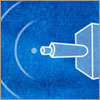

|
|
1803
The Double-Slit Experiment
By the early 19th century, most physicists agree with
Newton's well-established theory of light, which says
that light takes the form of particles—what we now
call photons. But English scientist Thomas Young isn't
convinced, and in 1803, he designs an experiment to test
the status quo. Young aims a beam of light at a barrier
that has two slits. If light is made of particles, he
reasons, those particles should travel in a straight
line through the slits, projecting two distinct lines of
light on the screen beyond the barrier. Instead, Young
sees a series of dark and bright lines on the screen, a
pattern that could only be produced by waves of
light interfering with each other. And yet other
experiments, both before and after Young's, convincingly
show the particle nature of light. Physicists are left
with the unsettling conclusion that light—and, as
they later find, electrons (matter)—has a dual
nature: Sometimes it takes the form of particles and
sometimes the form of waves.
|
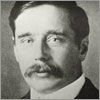

|
|
1923
Men Like Gods
Roman authors were the first to write alternate
histories—tales of what the world might have been
had historical battles ended differently. But stories
about alternate worlds that exist simultaneously with
our own came much later. H.G. Wells (pictured here)
becomes the first to write a science fiction novel that
uses a concept similar to Everett's theory of parallel
worlds. In Men Like Gods, several English
motorists inadvertently drive through an invisible
barrier and cross into a parallel world. This alternate
world's inhabitants, whom the travelers call "Utopians,"
explain that their universe split from ours 3,000 years
before, and that their world and ours are only two of a
vast number of parallel worlds.
|
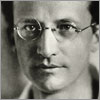

|
|
1926
Schrödinger's Wave Mechanics
Physicists are still puzzled by that strange
now-a-particle, now-a-wave nature of matter. But in
1926, Austrian physicist Erwin Schrödinger derives
an equation capable of explaining the so-called
"waveform" nature of matter. Through his equation,
Schrödinger describes how matter exists as a
probability wave. For example, an electron is a waveform
that exists throughout all of space, but there's a
higher probability of finding it in some places than in
others. It's hard to believe, but the math works. Using
the Schrödinger Equation, physicists can explain
many atomic-scale mysteries—for instance, how
electrons stay in orbit around the nucleus of an atom.
|
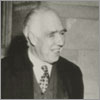

|
|
1927
The Copenhagen Interpretation
Schrödinger's equation describes the subatomic
world, but the world that we know seems to follow the
rules of classical—not quantum—mechanics.
How can this be? Danish physicist Niels Bohr (shown here
in polka-dotted tie, years later) provides a possible
answer in a 1927 lecture on his theory of
"complimentarity," which forms the basis for what will
later be known as the Copenhagen Interpretation. By this
time, researchers are aware of another surprising result
of the double-slit experiment (when conducted with
electrons). If, in the course of the experiment, the
researchers try to track the electron as it passes
through the slits, the electron starts acting like a
particle, not a wave—the interference pattern on
the screen disappears. The Copenhagen Interpretation
holds that the very act of measuring (or observing) the
electron's position causes something called "waveform
collapse." In other words, observed matter acts like a
particle.
|


|
|
1934
"Sidewise in Time"
While physicists contemplate waveform collapse, author
William Fitzgerald Jenkins writes of parallel worlds
under the pen name Murray Leinster. In the story
"Sidewise in Time," a mathematics professor named Minott
predicts that patches of parallel universes—worlds
where human history unfolded differently—will
start to tear through into our reality. When that
actually happens, Minott leads a band of students on an
adventure across the parallel worlds, hoping to locate
and rule a world that lacks sophisticated technology.
"Sidewise in Time" isn't the first story to feature
parallel worlds, but it does bring the concept to a pulp
science fiction audience when the story is published in
Astounding Stories in 1934.
|
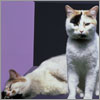

|
|
1935
Schrödinger's Cat
Back in physics, Erwin Schrödinger takes issue with
the Copenhagen Interpretation. To illustrate his
concern, Schrödinger devises a clever thought
experiment in 1935: A cat sits in a sealed chamber that
contains a flask of hydrocyanic acid, a poison that will
kill the cat if the flask is broken. A hammer mechanism
is rigged to fall and break the flask if a Geiger
counter detects the decay of a single radioactive atom
that is within the box. When a radioactive atom decays,
it emits a special type of particle. According to the
Copenhagen Interpretation, this particle exists as a
waveform, thus in all possible states, until it is
measured or observed. So, until someone looks into the
chamber, the radioactive atom has both decayed and not
decayed, and the cat is both dead and alive at the same
time. This example, Schrödinger reasonably remarks,
is "quite ridiculous."
|


|
|
1941
"The Garden of Forking Paths"
In 1941, Argentine poet Jorge Luis Borges writes a short
story called, in English, "The Garden of Forking Paths."
Borges' work focuses on a story-within-a-story: The
protagonist, Yu Tsun, meets a man who shows him a text
written by Tsun's ancestor. The text, also titled "The
Garden of Forking Paths," is full of seeming
contradictions. In one chapter the hero is dead, in the
next he is alive, and no explanation is given for the
change. At the conclusion of the story Tsun makes a
startling realization. The text isn't inconsistent. It
is intended to express a "web of time"—a metaverse
of parallel worlds that contain every possible reality.
When Tsun commits murder and faces execution for his
crime, he remains unconcerned, because he realizes that
his crime and approaching death are only one of many
parallel chronologies, which all contain different
outcomes.
|
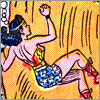

|
|
1953
Wonder Woman's Invisible Twin
In 1953, Wonder Woman, Issue 59, features the DC
Comics hero's first adventure in a parallel universe.
After a strange encounter with invisible foes, Wonder
Woman is thrown off a cliff, and as she falls, her
golden lasso is struck by lightning. Suddenly, she finds
herself in a parallel world where she meets her double,
Tara Terruna. Wonder Woman teams up with Terruna to
fight the evil Duke Dazam before returning to her own
universe. This issue marks the first of many
parallel-world adventures in comic books and cartoons.
|


|
|
1956
The Many Worlds Interpretation
Hugh Everett completes his Ph.D. thesis in 1956. It is
titled "'Relative State' Formulation of Quantum
Mechanics" but becomes generally known as the Many
Worlds Interpretation or the theory of parallel worlds.
Everett's theory provides one solution to the paradox
inherent in the Copenhagen Interpretation, as seen in
Schrödinger's thought experiment. The Copenhagen
Interpretation relies on the idea of a waveform
collapse, but Everett suggests something entirely
different—a waveform "branching." Although we only
see one outcome—the cat is either alive or
dead—there are actually multiple parallel worlds
that collectively contain all of the outcomes that we
don't see.
|
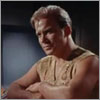

|
|
1967
Mirror Mirror
"Captain's log, stardate unknown. We are trapped in a
savage parallel universe, from which we must escape
within four hours or I will face a death sentence at
Mr. Spock's hands."
In Season 2, Episode 33 of Star Trek, Captain
James T. Kirk and his landing party accidentally travel
into a parallel world while "beaming up" during an ion
storm. In the parallel universe, they encounter barbaric
"doubles" of the crew of the starship Enterprise.
Like most fictional tales of parallel worlds, this story
breaks one of the cardinal rules of Everett's Many
Worlds Interpretation: Parallel worlds must never
interact. But hey, this is science fiction, where a
little poetic license goes a long way.
|
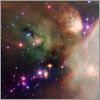

|
|
2005
Parallel Worlds Collide
Eventually, some theorists begin to argue that parallel
worlds can and do interact. In his 2005 book
Parallel Worlds, theoretical physicist and string
theorist Michio Kaku suggests that when parallel
worlds—which, according to string theory, exist in
parallel dimensional membranes—bump into one
another, the impact sets off an astronomical Big Bang
that generates a universe-worth of elements in the fiery
aftermath. It's possible, Kaku writes, that our own
universe started in just this way. Is he right? As with
all scientific theories, including Everett's innovative
foray into parallel worlds half a century ago, only
time—and a lot more work—may tell. In the
meantime, science fiction, running in parallel, will no
doubt break new ground of its own.
|
|


We recommend you visit the
interactive version. The text to the left is provided for printing purposes.
|












